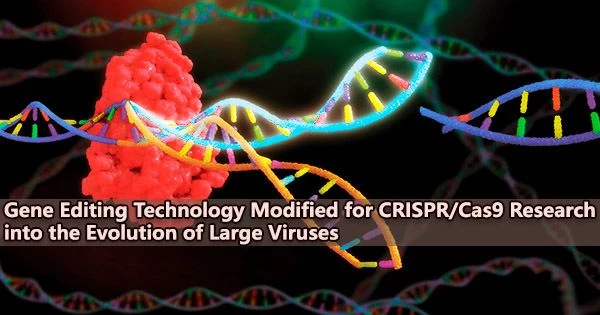Gene editing is a process of altering or modifying DNA sequences in a targeted manner. Gene editing can be used to correct genetic defects, create new traits, or study gene functions.
A team of virologists at Aix-Marseille University has found evidence that suggests the giant virus Pandoravirus neocaledonia evolved from smaller and simpler viruses. The team employed a modified version of the CRISPR/Cas9 gene editing technique in their study, which was published in the journal Nature Communications, to find out more about the evolutionary history of the big virus and maybe other viruses similar to it.
The CRISPR-Cas9 system relies on a guide RNA (gRNA) to direct Cas9 to the target DNA sequence. Once the Cas9 enzyme is bound to the target DNA, it cleaves the DNA and creates a double-stranded break (DSB).
Prior research has shown that most viruses are much smaller than bacteria. However, some of them are so big that biologists call them giant viruses. Somewhat perplexed by their existence, evolutionary biologists have long debated how such strange viruses might have come to exist.
Currently, there are two main theories: The first is that they evolved as a mix of several smaller viruses. The second is that they devolved from larger, more sophisticated organisms. The scientists in France used CRISPR/Cas9 to identify what are known as critical genes in the viruses’ genome (those that are needed to reproduce) in this fresh attempt to solve the puzzle.
Previous studies have demonstrated that removing genes one at a time until the organism is incapable of reproducing is a useful strategy to find critical genes. That is where CRISPR/Cas9 came in it allows for knocking out whatever genes are desired. The Pandoravirus Neocaledonia, however, provided a challenge because CRISPR/Cas9 can only delete one gene at a time and it has 25 copies of each of its chromosomes.
The scientists changed the gene editing method to produce a chain reaction so that as soon as one gene was cut, another cut would be initiated along the chain, and so on, until all of the copies were eliminated.
The genes required for reproduction were discovered to be situated on just one end of the genome, slightly distant from other, less important genes, after the chain-reaction gene editing on Pandoravirus neocaledonia rendered the virus incapable of reproducing.
The team asserts that there is proof the virus originated from multiple smaller viruses. They assert that it is likely that additional massive viruses originated in a manner akin to this one.
















